Godzilla Against MechaGodzilla opens in the Godzilla-significant year of 1999. The impossible future of Destroy All Monsters, the return of Godzilla in Godzilla 2000 (1999 in Japan), the date of the MUTO attack in 2014 Godzilla. In this 1999 backstory, Godzilla attackes Japan, and our military heroine is blamed for the deaths of her superior officers. And we see them die as Godzilla plants a gigantic foot on them. This "Godzilla kills people" attitude is lighter than it was in GMK, but it's still effective in making Godzilla a menace. Also, showing the audience a refugee center where people whose lives have been broken by Godzilla's rampage is a nice reminder that smashing buildings isn't just fun, although it's softened a bit by a soldier's polite response to a little boy's kind offering.
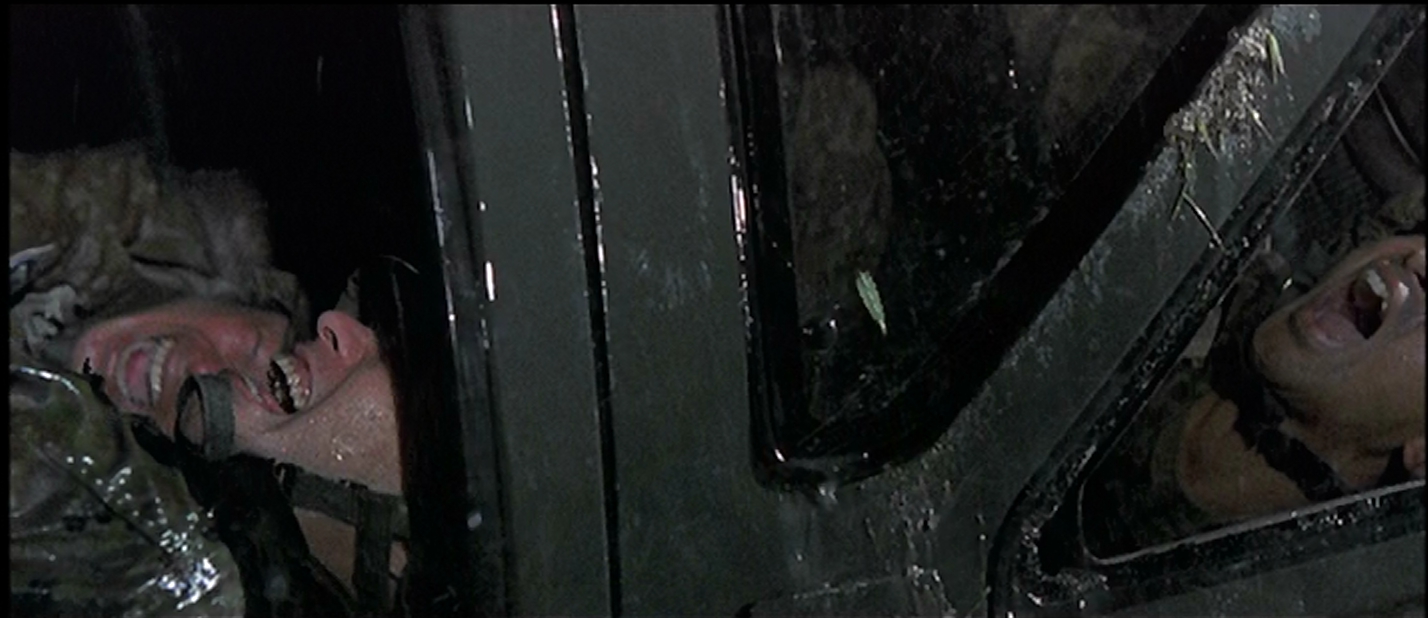
As with Godzilla vs Megaguirus, the military is again valorized. They undertake the rescue missions, and they ate the ones who will stand against Godzilla. The Anti-Godzilla force is the Anti-Megalsaurus Force, so not specifically about Godzilla, but various monsters that have attacked Japan.
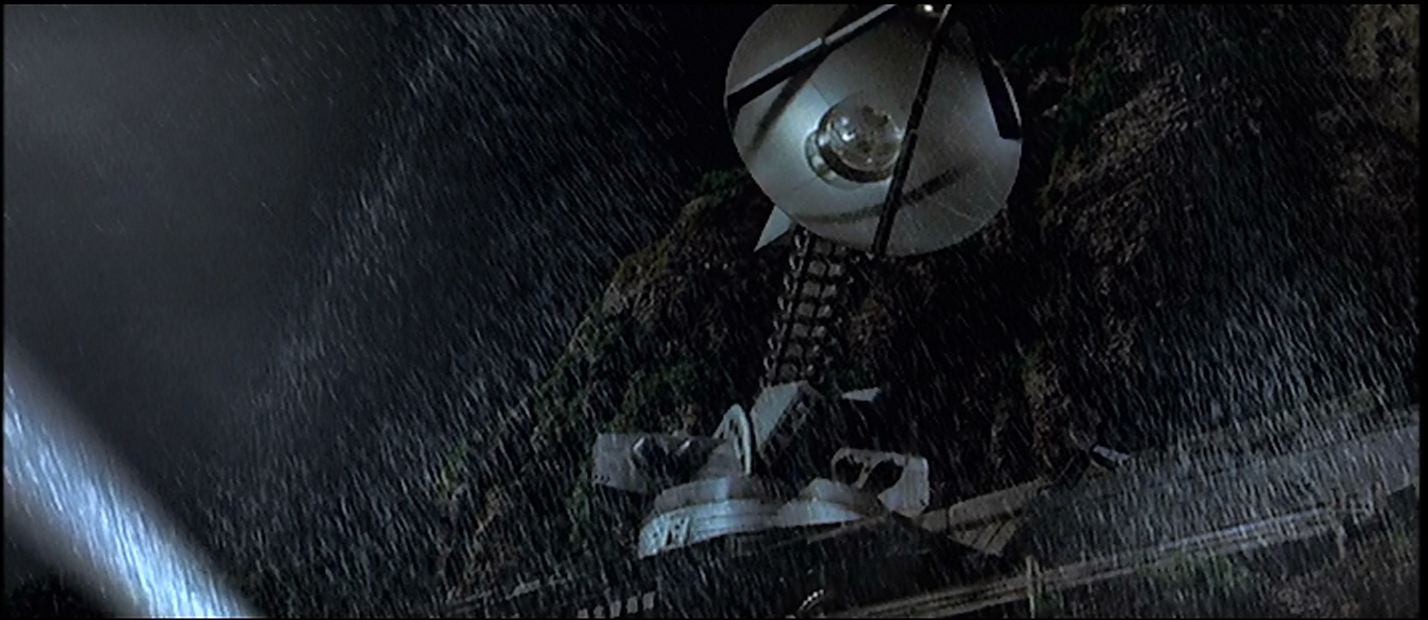
Somewhat in keeping with Godzilla's metaphor as force of nature, Godzilla comes ashore during a typhoon. The flashback takes place entirely durng a heavy rainstorm, and it looks good, grounding the encoutner in the real world. With foreground and middleground, the battle looks a lot less like it takes place on a small soundstage. Pacific Rim also set a major encounter in the rain during the Battle of Hong Kong. In a very nice homage to War of the Gargantuas, the maser cuts the top off several trees before connecting with Godzilla.
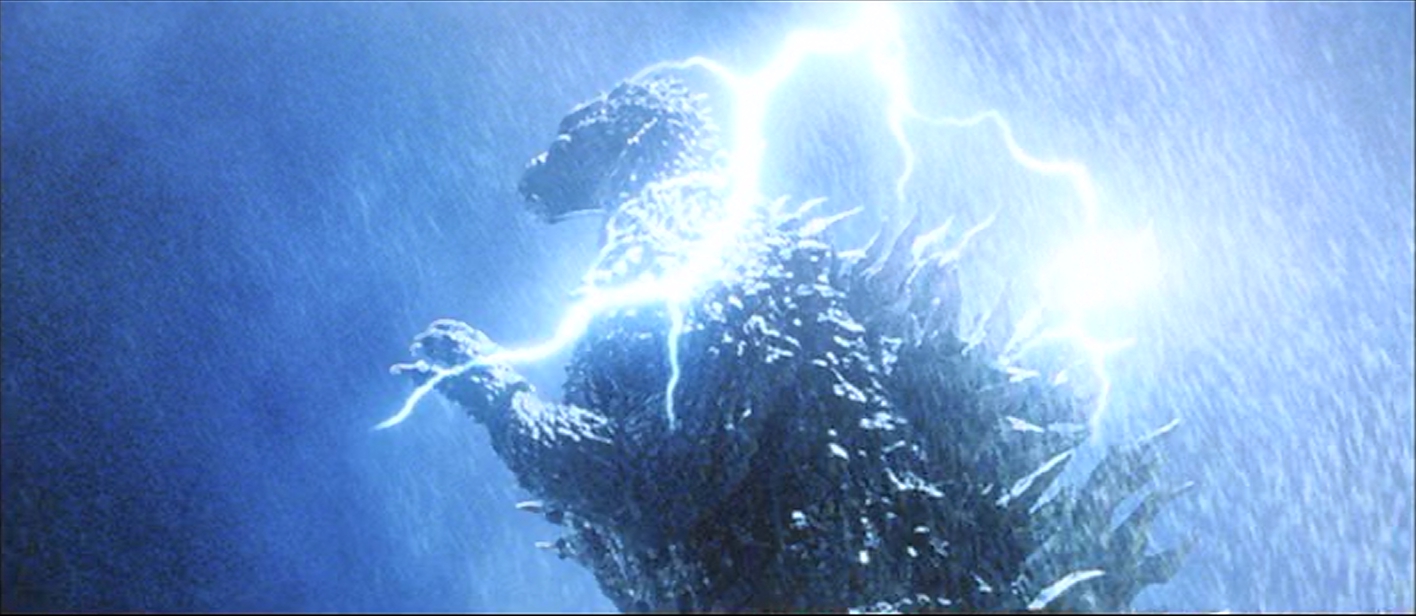
After the attack is over the (female!) prime minister of Japan tells us where we are, discussing the variou8s monstersd that have attacked Japan in the past. The film picks and chooses which of Toho's films it wants to include in its past. Footage from 1954 Godzilla, the original Mothra, and War of the Gargantuas (all Ishiro Honda classics) shows us why Japan has heat rays and maser weapons. In a clever subversion of the original Godzilla, the bones of Godzilla are shown after it is dissolved by the Oxygen Destroyer. This was not in the original film, but Dr. Serizawa's fish were reduced to bones when subjected to the Destroyer.
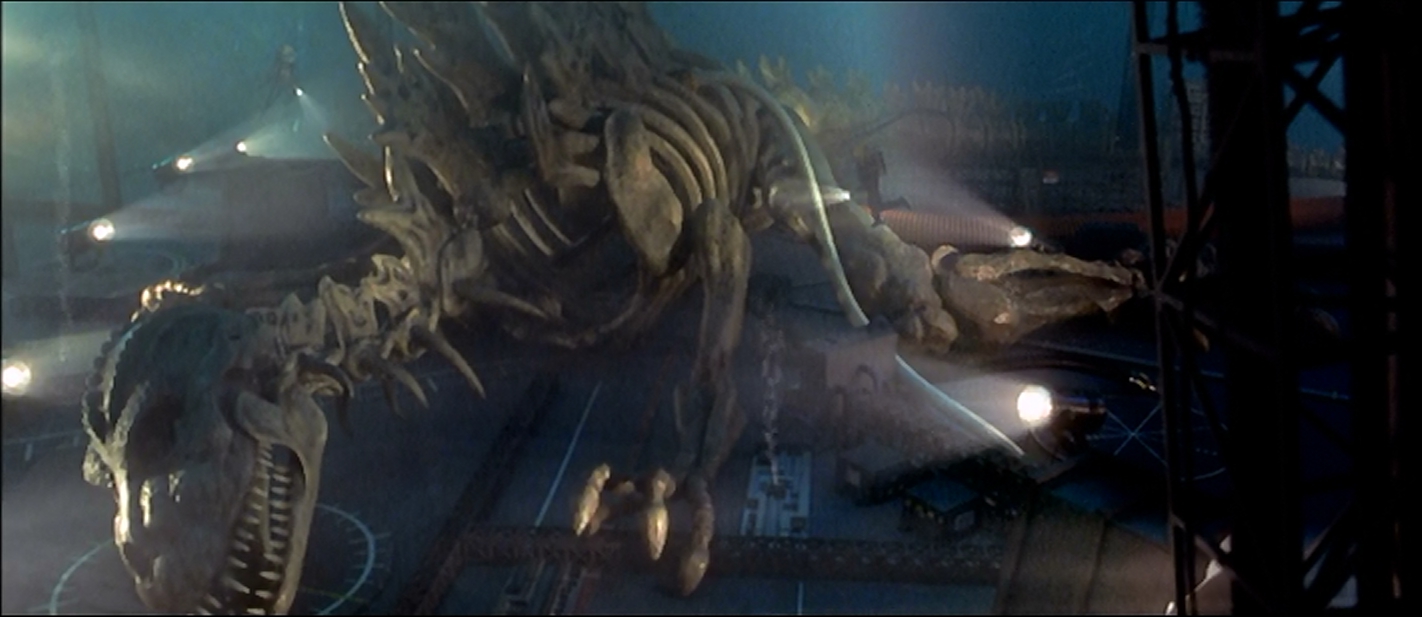
Godzilla itself has returned to the long-spined creature from Godzilla 2000, rather than keeping the dead-eyed GMK version. The major change seems to be that Godzilla's jaw is more slender, birdlike. I don't know why, but this trend continues until Godzilla: Final Wars. This also introduces a new concept with Godzilla's spines. Previously, they just glowed when Godzilla breathed his heat ray, and in the Milennium series, they did so before, demonstrating a sort of power up. Now they make a popping sound, as if a connection were arcing, as they light up fitfully, almost like a cold incandescent light. It's wonderful, creating anticipation for the powerful atomic heat ray. And there's a light touch of the atomic bomb metaphor, also. The Prime Minster tells the press that Godzilla has attacked Japan twice, a parallel to the two nuclear bombs that were dropped on Japan.
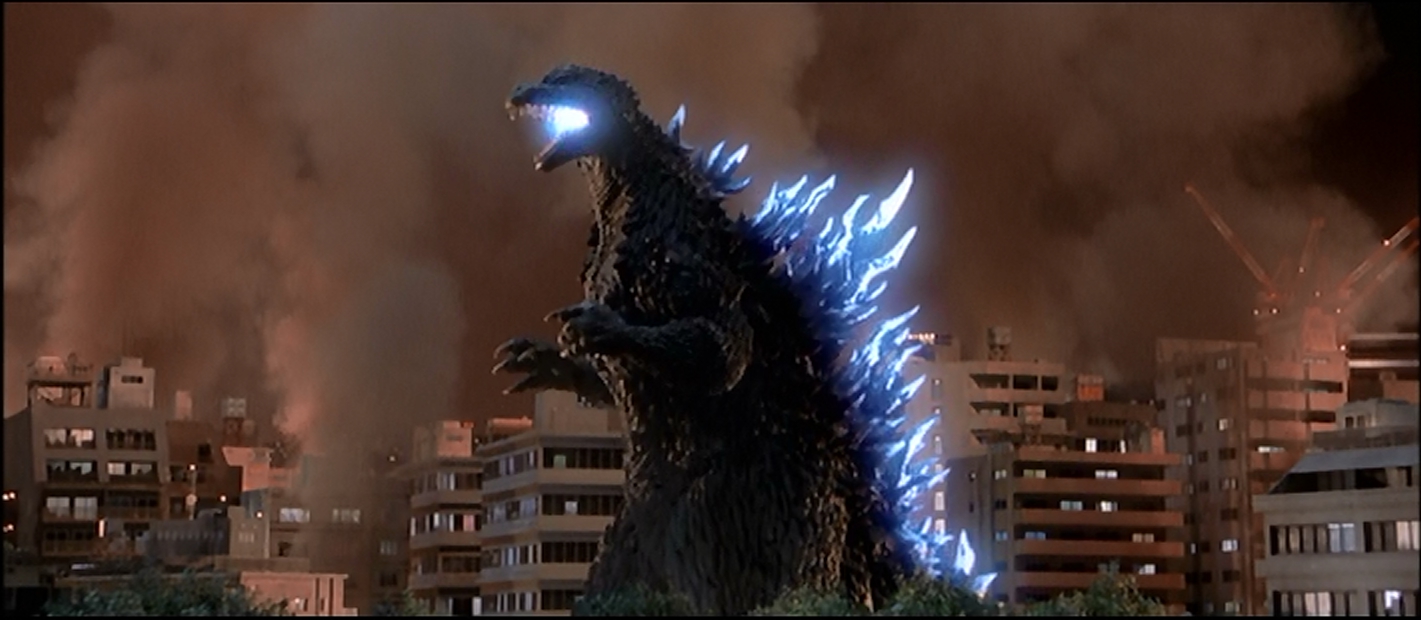
Godzilla's foe is sort of himself. MechaGodzilla this time is based on Godzilla's bones and DNA. The appearance is refined from the previous outing with Mechagodzilla, (leaving aside MOGERA). While this Mechagodzilla is not the meshing of two separate vehicles, it still has the two guns that project over its shoulders. It also has the Absolute Zero Gun, a nod to another Honda film, Atragon. Like many ultimate weapons, it has a long warm-up time, allowing the target to dodge. Gypsy Danger's Plasma Gun had this problem in Pacific Rim. Kiryu is a drone, like the Super X-2, remote-controlled from the White Heron craft, large vector-thrust planes rather like the Griffon from Godzilla vs Megaguirus.
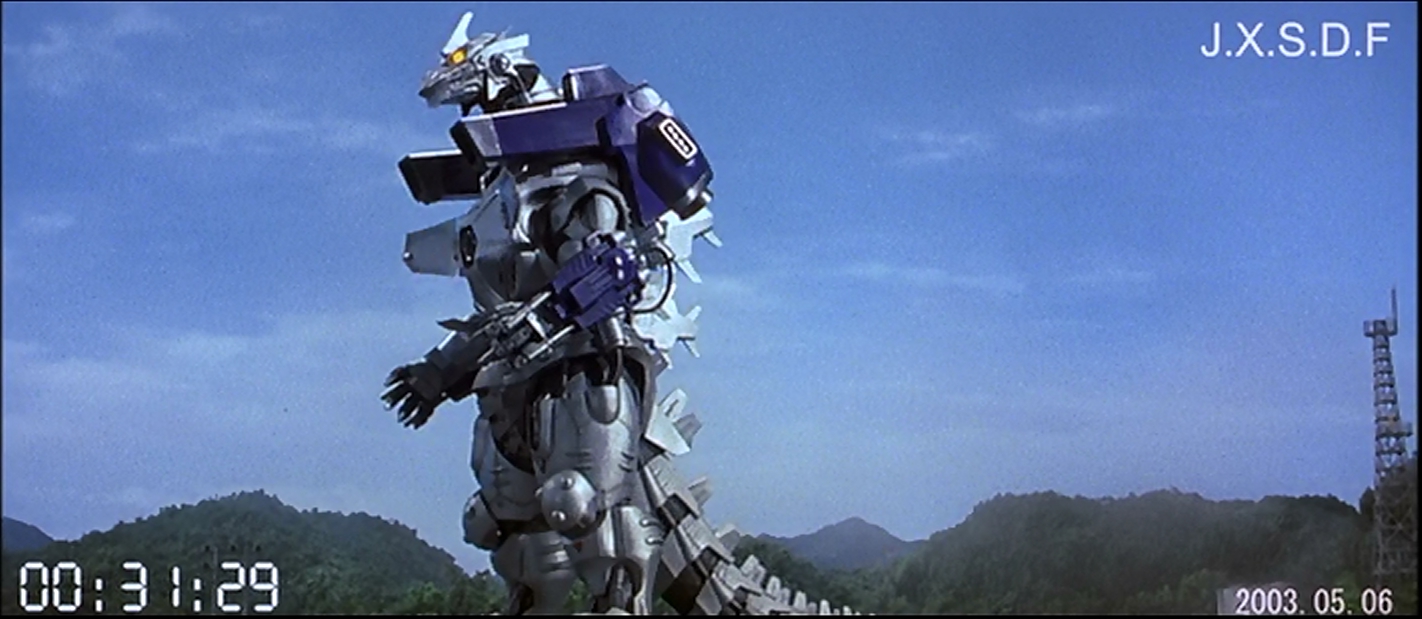
Clearly, director Masaaki learned something from working on Godzilla, Mothra, and King Ghidorah, Giant Monsters All-Out Attack, because the fights carry a great deal more weight and plot importance. Godzilla is more often shot from a low angle, giving him the sense of size and power he had in GMK. the integration of the miniatures with the regular shots is much improved, also.
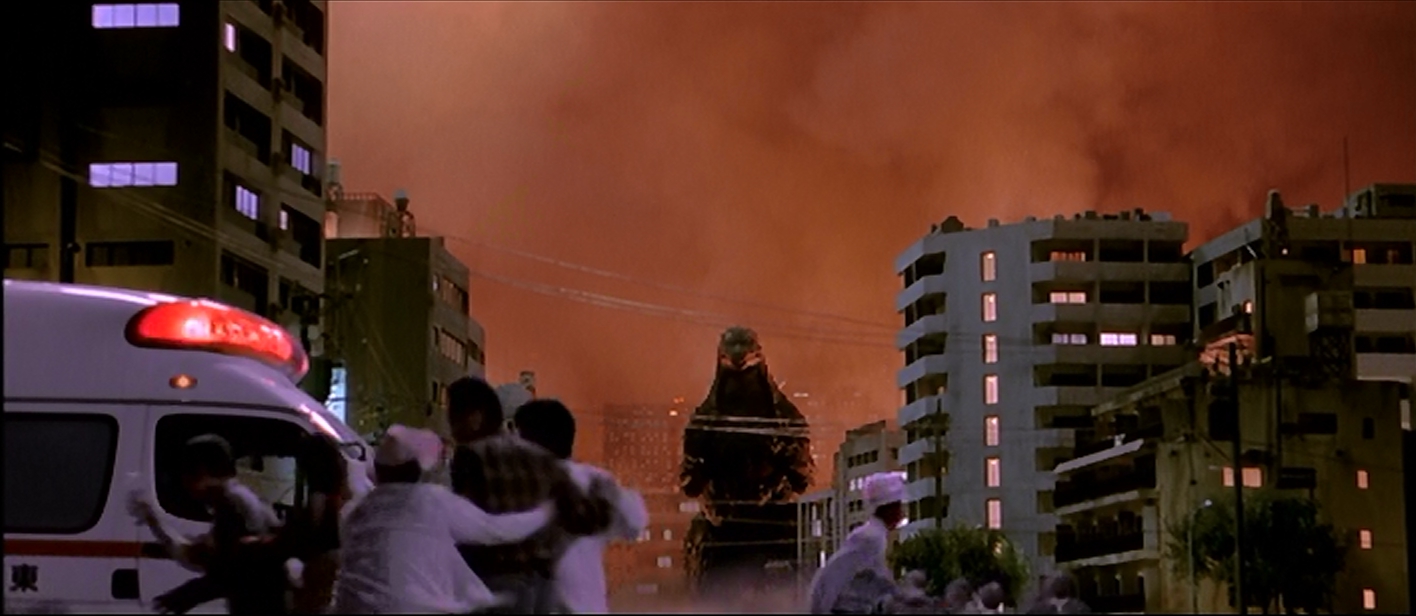
The first confrontation between Kiryu and Godzilla is pretty good. It's primarily a stand-off, with Kiryu firing a huge amount of missiles at Godzilla. About to use teh Absolute Zero Gun, Kiryu, which is run by a Godzilla-derived DNA computer, hears Godzilla's cry and begins to level the city it's standing in. Unfortunately, there's no off-switch, so the only thing the military can do is wait for its batteries to run out.
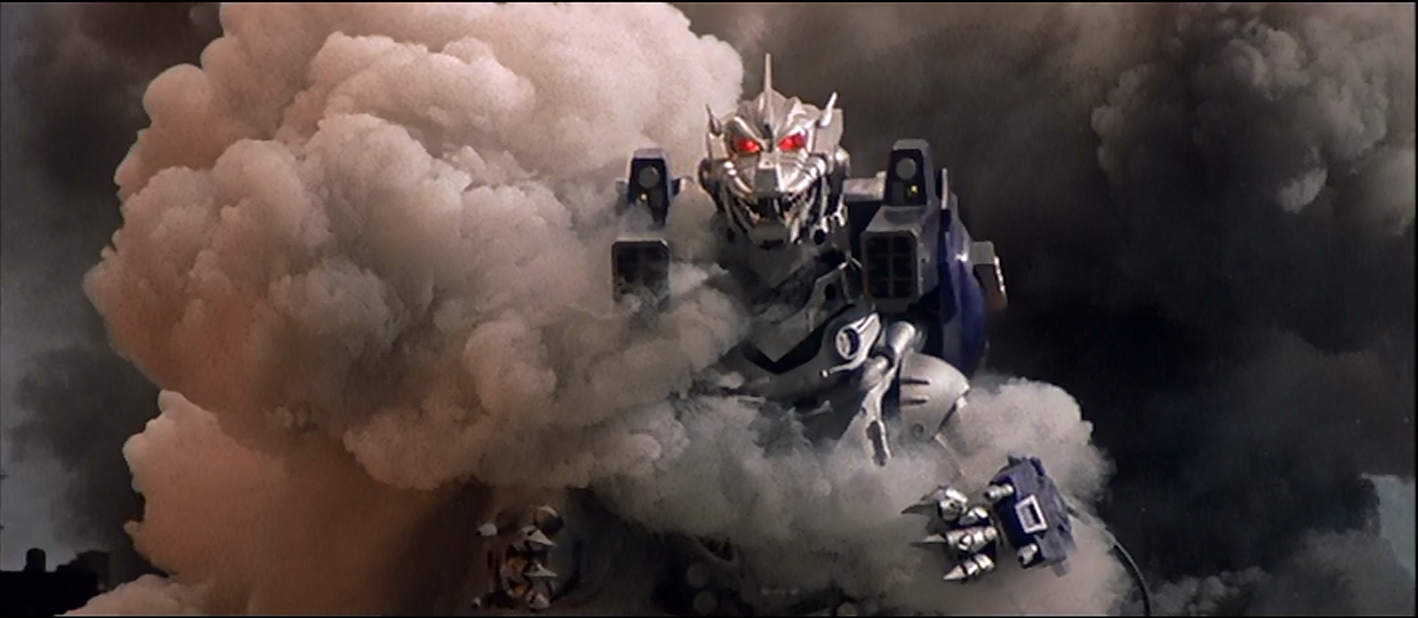
Godzilla Against MechaGodzilla recycles a lot of the same ideas as Godzilla vs Megaguirus. The military brings in a civilian with technical expertise, who has a flirty relationship with the damaged woman fighter pilot. Part of the plot invoplves repairing damaged code for the anto-Godzilla superweapon. But there are other elements that give this a more unique flavor. When Mechagodzilla is approved, reporters demand to know where the Prime Minister thinks she will get the money.
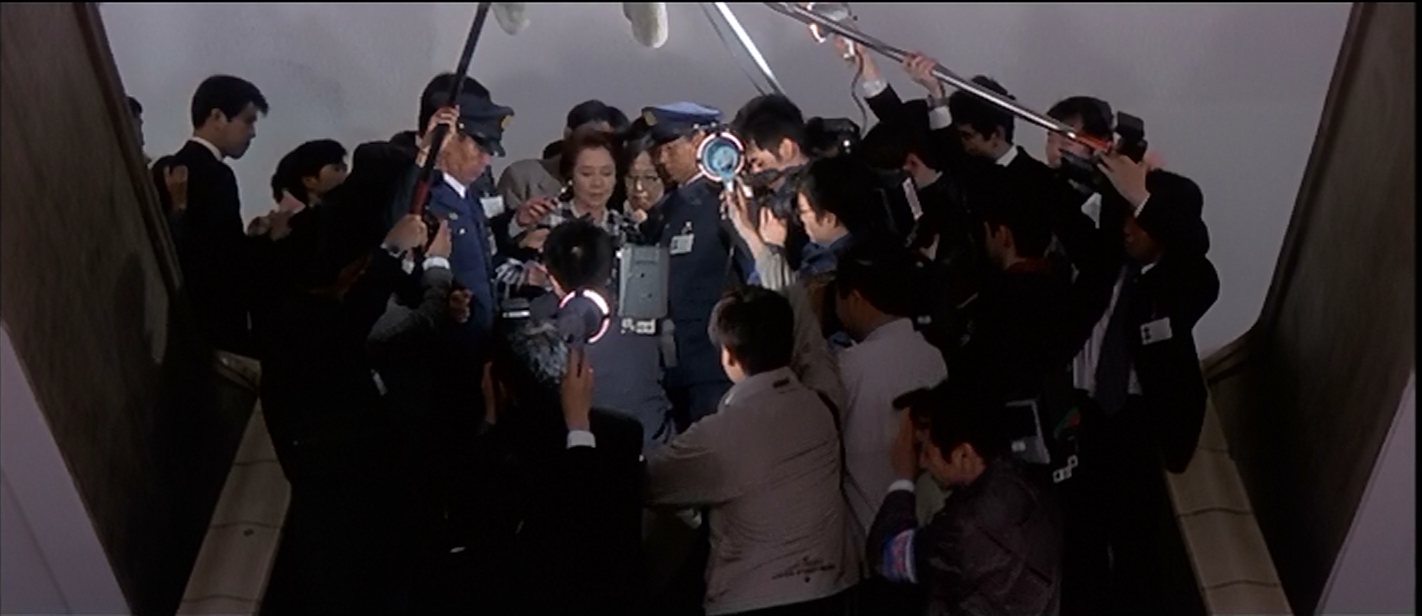
Godzilla has certainly become more threatening since Godzilla vs Megaguirus. In its third and final attack, it sweeps the sky of planes. A shot where Godzilla advances toward the camera, a burning plane falling out of the sky just in front of him is particularly effective.
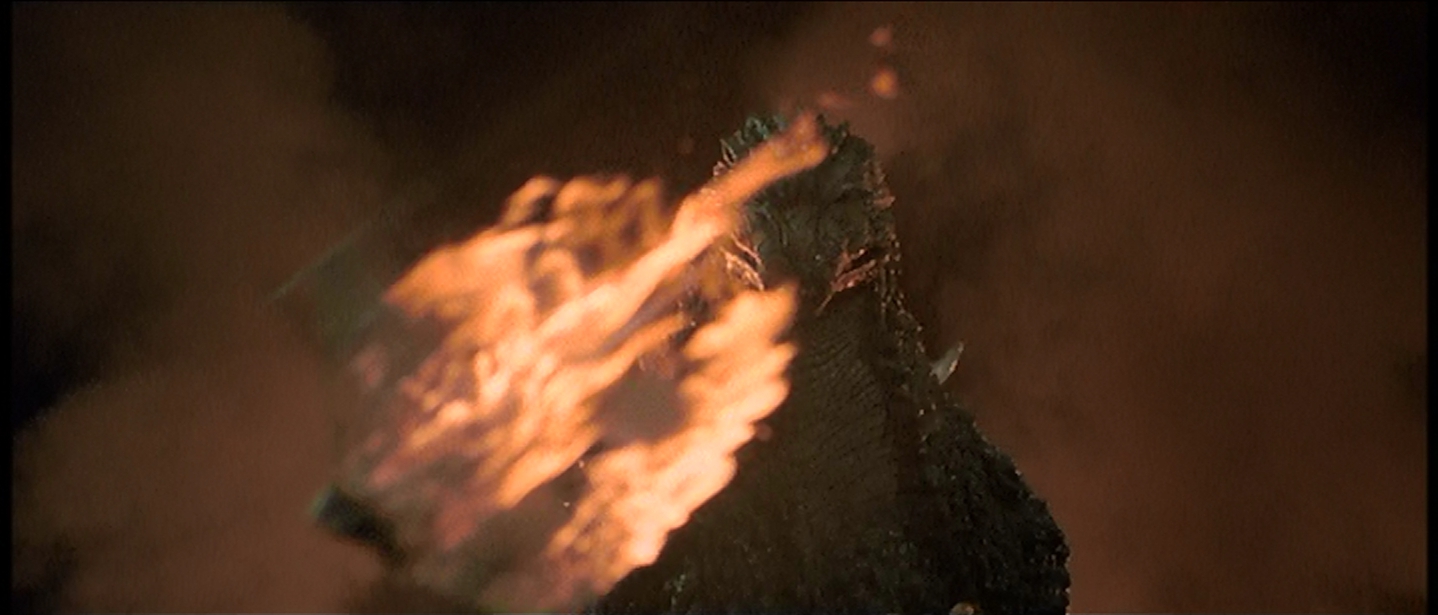
Godzilla is unstoppable, the risk is so great that Kiryu must again be deployed. The resulting fight is a winner. Every fight should be a story with a beginning, a middleand an end. Otherwise, it's just action without putpose. Godzilla is a known quality, and Kiryu must do everything it can to keep away from Godzilla's heat ray.
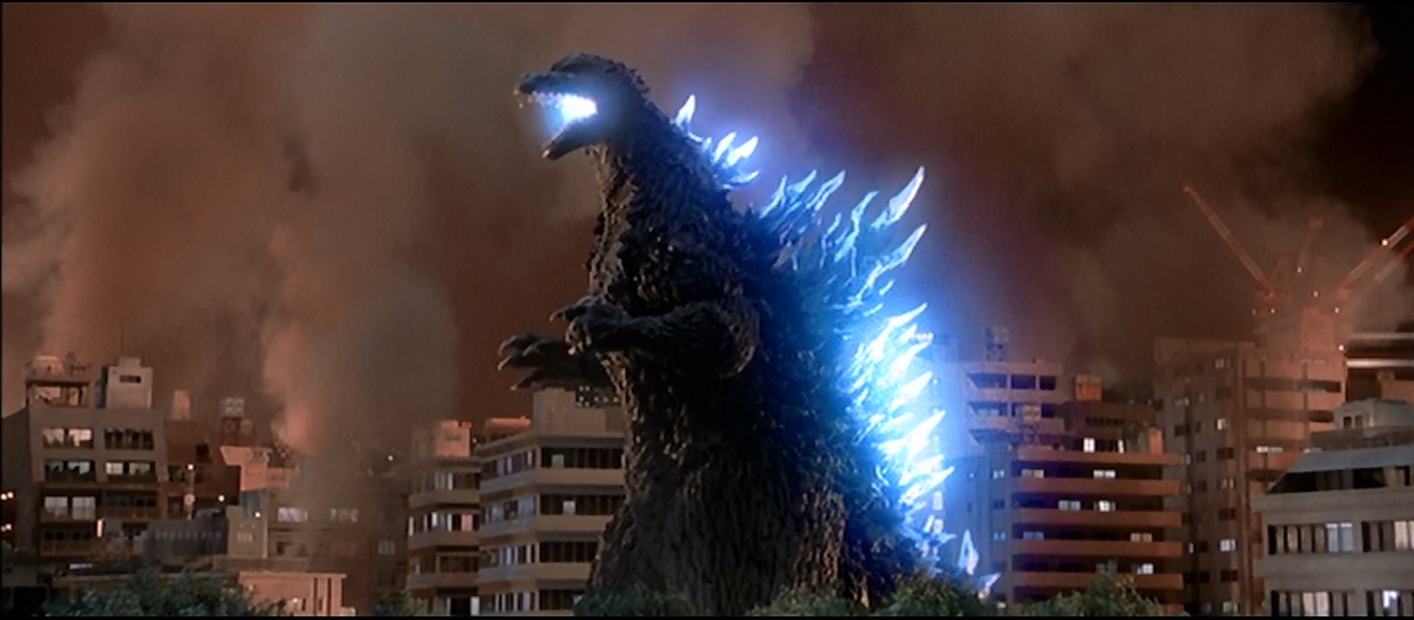
Kiryu, however, has a lot of surprises. It has a blade that it uses to stab and then electrocute Godzilla. This works until Godzilla uses its heat ray to destroy the blade and knock Kiryo down.
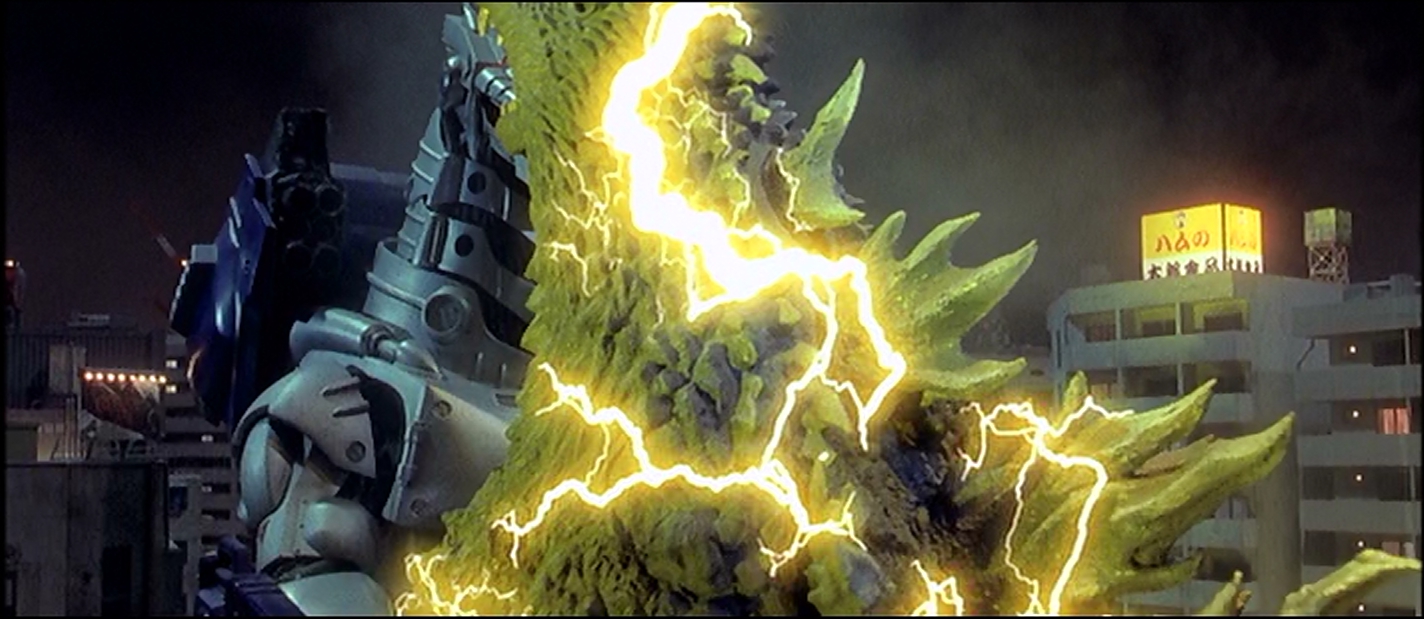
Mechagodzilla would have gotten a faceful of atomic ray if one of the White Heron aircraft hadn't intervened. The reversals convey a sense of tension, we don't know who is going to be the winner, but it's fun to watch them go at it.
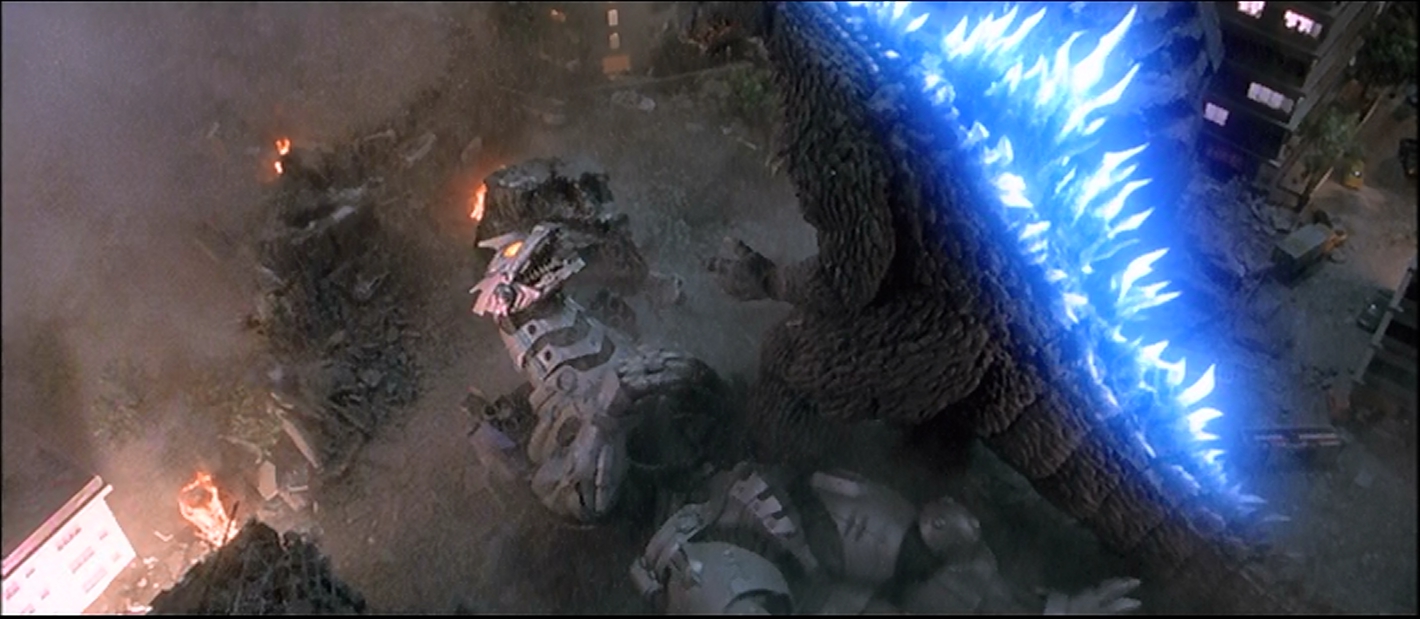
It gets a little goofy with Kiryu swinging Godzilla by the tail, but this is intended as a kids film, a double feature with Hamtaro.
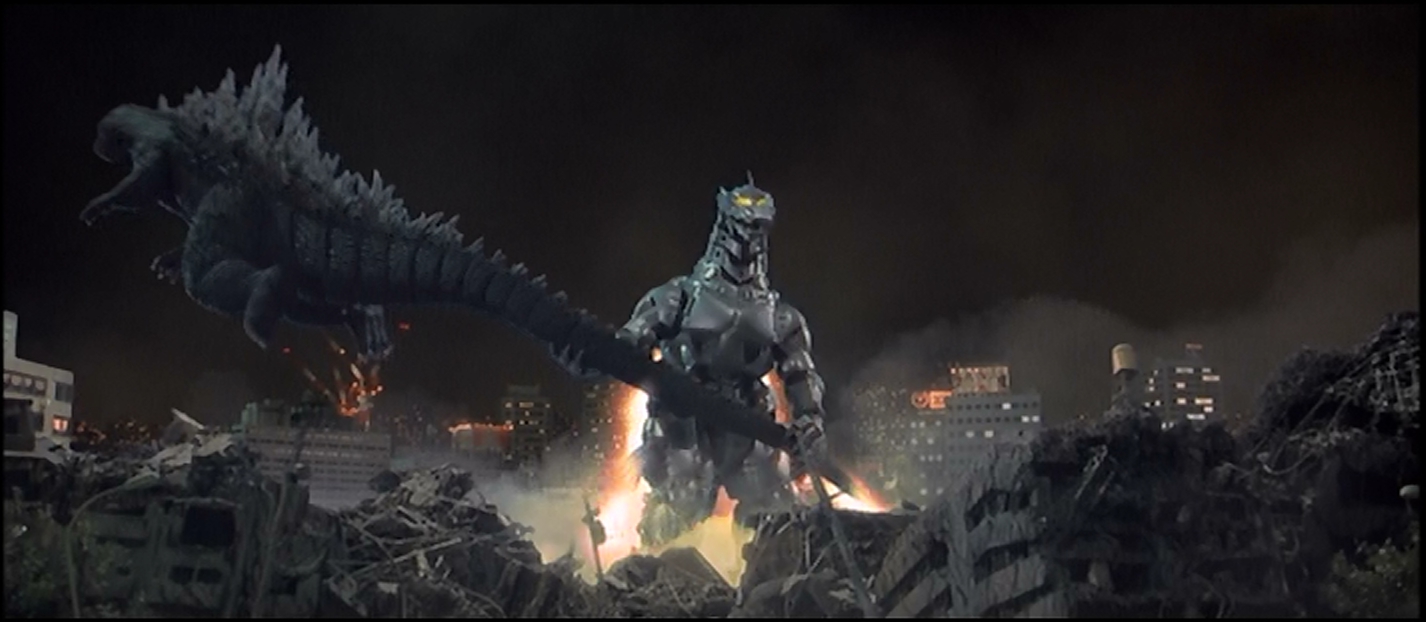
Mechagodzilla finally gets the Absolute Zero Gun off, but misses, desttoying three buildings instead. Oops. So the film does not universally valorize the military. Military mistakes are shown to be costly.
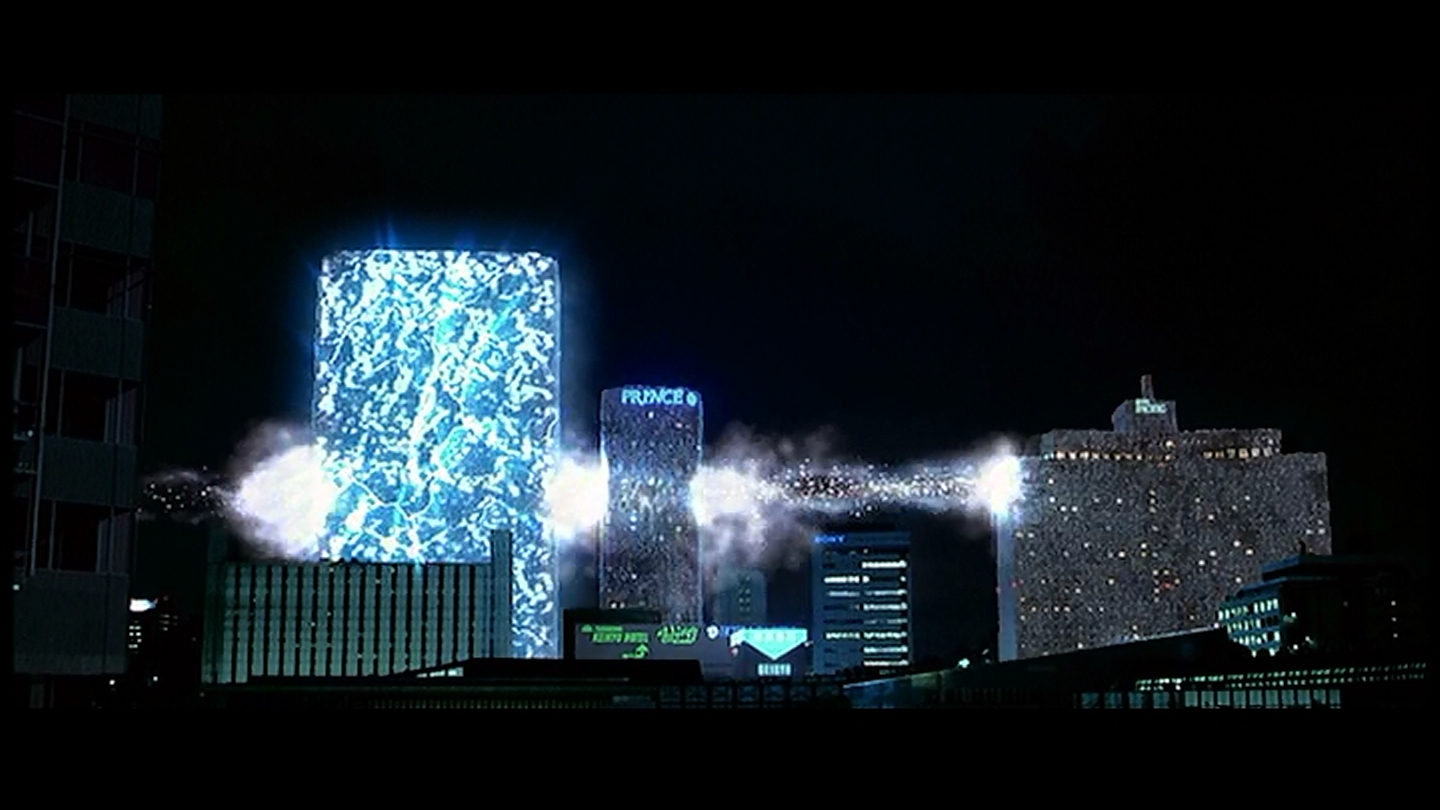
In the end, Kiryu is flown out over the ocean, holding Godzilla's mouth closed, charging the Absolute Zero Gun. They dive into the sea, and the Gun goes off, turning the sea to ice. Godzilla rears back, still alive, but with a large wound on his chest (this will become a plot point in the next film). Deciding he's had enough, Godzilla turns his back on Japan and returns to the sea.
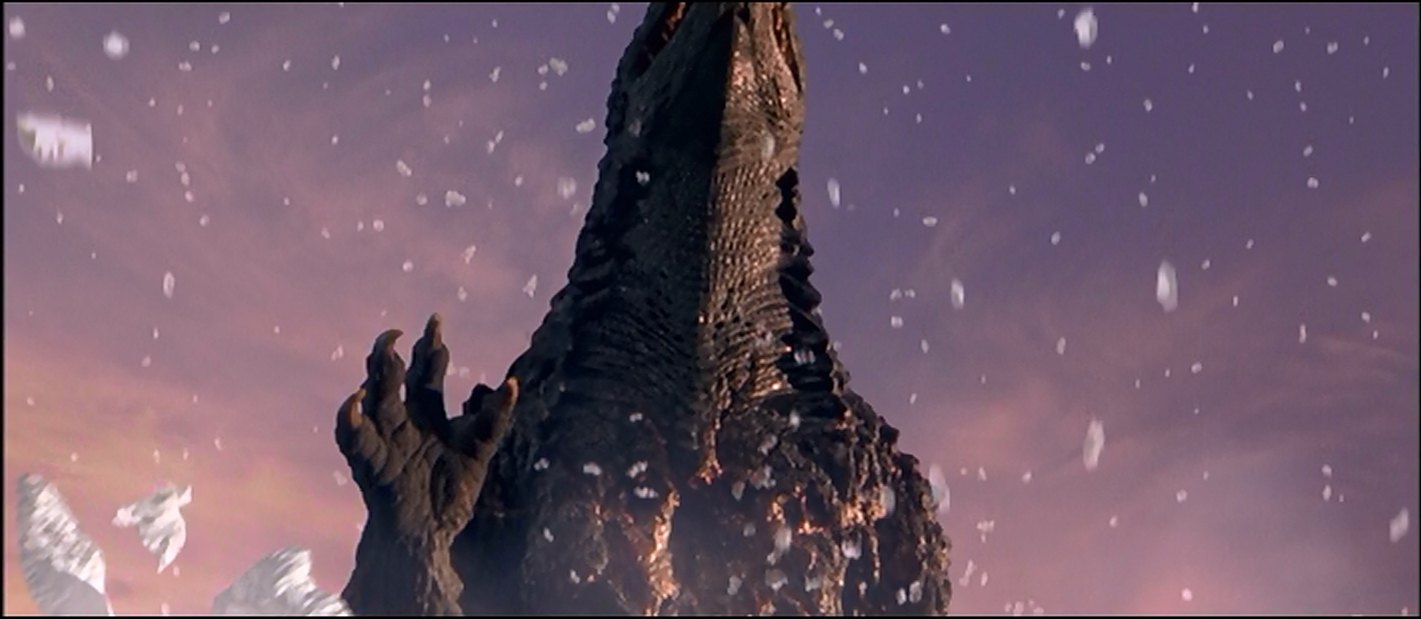
Michiru Ôshima apparently felt her score was drowned out by the monstrous sound effects in Godzilla vs Megaguirus, but no problems here. Her score is one of the best, rich, threatening, and thrilling.
Godzilla Against Mechagodzilla is a step down from GMK, but it's also a big step up from Godzilla vs Megaguirus. The Godzilla sequences are rewarding and entertaining. Even if the human interaction is flat and facile, it's not insulting or idiotic. It's a good entry into the franchise, entertaining.
Next up, the MechaGodzilla and Mothra gang up on poor Godzilla.
No comments:
Post a Comment